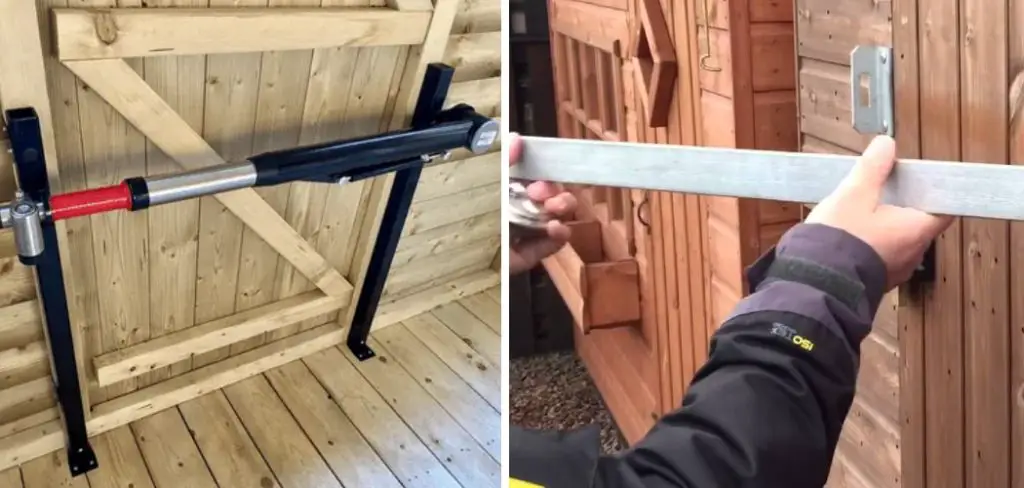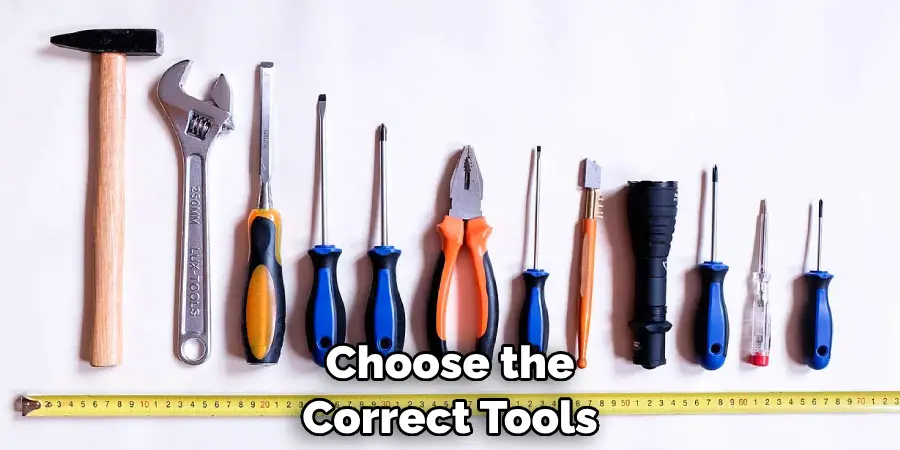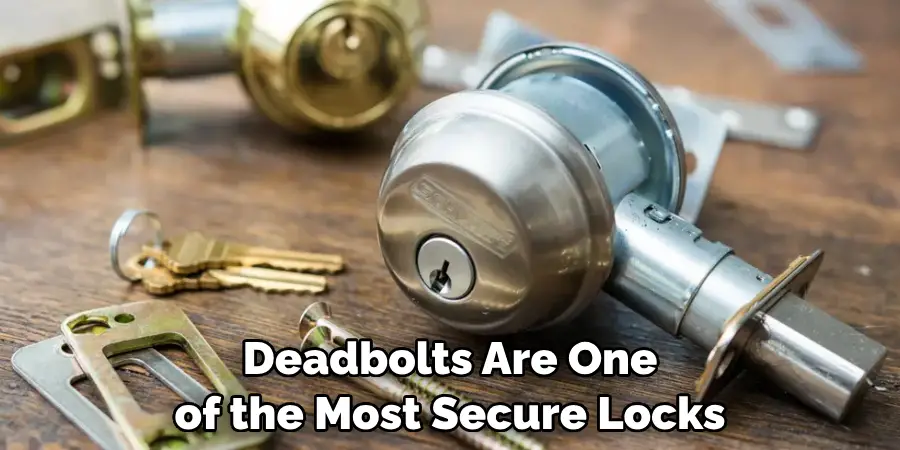Do you have a shed in your backyard that contains valuable tools and equipment? If so, it’s essential to ensure the door is properly secured for optimal security. Many people may not realize how easy it can be to break into even the simplest of locks.
In this blog post on how to secure a shed door, we’ll delve into why securing your shed door is important, discuss several options to choose from when creating an effective locking system and provide some tips on maintaining a secure barrier for long-term use. With the right guidance and knowledge at hand, taking steps to secure your shed will become much easier!

What is Shed?
A shed is a small structure that typically has a wooden or metal frame and is used for storage. It can also be used as an additional workspace, workshop, garden center, or hobby room. A shed typically consists of a number of walls, a roof, flooring, and some type of door to provide entry. The exterior is usually constructed with weatherproof materials to protect the contents from the elements.
Why Secure Your Shed Door?
Having a secure shed door is essential to protecting your valuable items and preventing unwanted entry. An improperly secured shed door can easily be opened by thieves, leaving you exposed to theft or vandalism. Additionally, keeping the door locked ensures that children are kept out of any dangerous tools or areas within the shed.
There are a number of locking solutions to choose from depending on your needs and preferences. These can range from basic locks, such as padlocks, to more advanced solutions like electronic locks.
10 Step-by-step Guidelines on How to Secure a Shed Door
Step 1: Choose the Right Lock
When selecting a lock for your shed door, consider what type of security you need and whether you want a manual or electronic locking system. Padlocks are one of the most common options and come in many shapes, sizes, and materials to suit different needs.

It’s important to make sure the lock is strong enough to resist tampering or picking. But not all locks are created equal, so be sure to do your research and select the right one for you.
Step 2: Install the Lock
Once you’ve chosen a lock, it’s time to install it. Depending on which type of lock you select, installation may involve drilling holes or attaching mounting plates to the doorframe. Make sure you follow the instructions for installation carefully to ensure a secure fit.
Otherwise, the lock won’t be as effective. It’s also important to choose the correct tools for the job to ensure proper installation. You don’t want to risk damaging the doorframe or lock with a tool that’s too big or powerful.
Step 3: Apply Weatherproofing
It’s essential to weatherproof your shed door so that it can stand up against the elements and reduce wear and tear due to exposure. There are a number of weatherproofing products available, such as paint or sealant, which are designed to protect your door from the sun, wind, rain, and other conditions.
It’s important to apply the weatherproofing before you install your lock, as it will ensure a more secure fit and help prevent damage.
Step 4: Reinforce the Doorframe
Another step to consider when securing your shed door is reinforcing the doorframe. This can be done using a variety of materials, such as heavy-duty metal plates or bolts.
The goal is to make it difficult for someone to kick in or pry open the door. But it’s important to make sure you select materials that are appropriate for your doorframe. If the material is too heavy, it can cause damage or put unnecessary strain on the structure.
Step 5: Upgrade Hardware
If your shed door is equipped with standard hardware, consider upgrading to higher-security locks and hinges. This will make it much harder for someone to force their way into the shed without the proper key or combination.
It’s also a good idea to check that all of the door hardware is in good condition and functioning properly. You don’t want to be stuck with a door that won’t close properly or locks that are easy to tamper with. It’s best to address any issues as soon as you notice them.

Step 6: Invest in Security Lights
Installing security lights around the perimeter of your shed is a great way to keep intruders away. Motion-activated lights will activate when they sense movement, making it difficult for someone to sneak up on you or gain entry without being seen. You can also connect the lights to a home security system for added protection.
Step 7: Install an Alarm System
For an extra layer of security, consider installing a door alarm system. These systems can be set to sound an alarm if the door is opened or tampered with in any way. This will alert you and your neighbors if someone is trying to gain entry into your shed. If you’re serious about security, an alarm system is definitely worth investing in.
Step 8: Use Deadbolt Locks
Deadbolts are one of the most secure locks available and are a great way to ensure your shed door is kept safe. These locks require a key to open, making it difficult for someone to gain entry without the right tool or combination.
But it’s important to make sure you select a lock that is strong enough to resist tampering or picking. However, deadbolts do require a bit more effort to install than other types of locks.
Step 9: Replace Locks Regularly
Finally, be sure to replace your lock regularly to maintain a high level of security. Many locks can become worn or damaged over time, making them vulnerable to forced entry. Regularly replacing your locks will ensure your shed remains secure for years to come.
This also applies to any security lights or alarm systems you may have installed. It’s important to check that all components are still functioning properly and replace anything that’s no longer working.
Step 10: Maintain Your Shed Door
It’s also important to regularly inspect and maintain your shed door and its hardware. This can help identify any potential weaknesses or areas of concern that may need to be addressed. Over time, you may also need to make repairs or replace components if they become damaged or worn.

By following these steps on how to secure a shed door, you can ensure your valuable items are kept safe and protected from unwanted visitors. Taking the time to properly secure your shed will provide peace of mind that your belongings are safe and sound.
Additionally, it will help protect your home and family from any potential dangers that may exist within the shed. Investing in an effective locking system is time well spent and can go a long way toward keeping your shed secure.
Frequently Asked Questions
Q1. What is a Shed?
A1. A shed is a small structure that typically has a wooden or metal frame and is used for storage. It can also be used as an additional workspace, workshop, garden center, or hobby room.
Q2. How Can I Secure My Shed Door?
A2. There are a number of steps you can take to secure your shed door. These include choosing the right lock, installing the lock correctly, weatherproofing the door, reinforcing the doorframe, upgrading hardware, investing in security lights, and installing an alarm system. Additionally, you should replace locks regularly and maintain your shed door to ensure maximum security.
Q3. What Types of Lock Should I Use?
A3. The type of lock you use will depend on your security needs and preferences. Padlocks are one of the most common options, but you may also want to consider deadbolts or electronic locks for additional protection. Be sure to do your research and select the right type of lock for you.
Q4. What Is the Best Way to Weatherproof My Shed Door?
A4. There are a number of weatherproofing products available that can help protect your shed door from the sun, wind, rain, and other elements. These include paints or sealants designed specifically for outdoor use. Be sure to read the product directions carefully before applying it to your door.

Conclusion
Thankfully, now you know the basics when it comes to securing a shed door. Remember that a secure lock and good hinges can make all the difference in the world. Don’t forget to check your local hardware store for a set of deadbolts and locks, as they are often reasonably priced and durable enough to last a lifetime.
Additionally, if there is an issue with insulation or air leakage, then double checking your removal/installation process just once more could yield much better results.
Furthermore, remember to keep an eye out for peeling paint, loose boards or warping due to extreme weather conditions. All these means of safety will greatly enhance the security of your shed door over time.
Taking extra measures such as using lag bolts instead of regular screws or using specialized weatherproof materials can also help ensure reliable door security.
Above all else, don’t underestimate the importance of establishing routines for inspecting your shed twice a year, as this can help detect issues early on that can be easily fixed if found in time. We hope this article has given you insight into how to secure a shed door and that taking these steps will provide you with peace of mind regarding its security!
